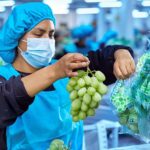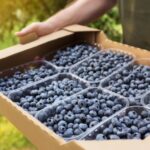Agronometrics Interviews: Camposol

In this installment of the ‘Agronometrics In Interviews’ series, Sarah Ilyas studies the state of the Mexican Avocado and Blueberry season in an exclusive interview with Juan Pablo Di Prima, General Manager EMEA Region for Camposol. The series is based on interviews with esteemed professionals from the industry, focusing on a specific origin or topic visualizing the market factors that are driving change.

Juan Pablo Di Prima, General Manager EMEA Region, Camposol
Can you tell me a little bit about Camposol?
We are producers based in Peru but we also have farms in Uruguay, Colombia, Mexico. We are also present in Chile, Cyprus, Costa Rica, Switzerland, Spain, the United States, China, and the Netherlands. We produce five products: blueberries, avocados, table grapes, mangos and mandarins.
What are your thoughts on the Peruvian Blueberry season?
We have had a good season. It starts in June and goes all the way to January then we have a drop in volume, we then start again in mid February with the second crop.
What do you expect for the upcoming season for blueberries and avocados?
We are expecting a 20% growth in blueberry production and more than 25% growth in avocado production. We expect better volumes and an extension in the season in addition to good quality.
What are some of the problems that the blueberry industry is facing?
There is an influx of blueberries but demand has been stable in the US, Europe and China. China is growing a lot of blueberries. For the next season, we expect a growth in the volumes coming into the market, as I previously mentioned, and the retailers, because of the current economic situation, expect the same volumes or more promotions in the prices that we expect to be more stable.
What kind of innovation strategies is Camposol focusing on?
Our innovation mainly concerns packaging; we are trying to reduce plastics in our packaging. There are some lines that we do with cartons, mainly for the organic lines. We also want to pack more at the origin. We pack roughly 30% of the volume of blueberries at the destination. But we have seen higher quality for the products that are packed at origin. We have four main varieties but we are gradually expanding our varieties. We have developed 15 varieties in our research and development department and now we are testing those 15 varieties. From those we should go down to three varieties. Those three will then be planted in the next couple of years.
Where do you see the Peruvian and avocado industries heading?
For the future, we expect more varieties for blueberries depending on the market. We are used to high volumes of certain varieties and we expect that our portfolio will consist of more varieties depending on the market that we want to tackle. We are seeing higher volumes for avocados and we see an opportunity in Europe because the consumption per capita in Europe is still low compared to the US for example. Within Europe, you still see some differences in the consumption per capita. Consumption in Germany is very high, consumption in Scandinavia is high, but there are some countries that still have low consumption.
In our ‘Interviews’ series, we work to tell impactful stories by collaborating with leaders in the industry. Feel free to take a look at the other articles by clicking here.
All pricing for domestic US produce represents the spot market at Shipping Point (i.e. packing house/climate controlled warehouse, etc.). For imported fruit, the pricing data represents the spot market at Port of Entry.
You can keep track of the markets daily through Agronometrics, a data visualization tool built to help the industry make sense of the huge amounts of data that professionals need to access to make informed decisions. If you found the information and the charts from this article useful, feel free to visit us at www.agronometrics.com where you can easily access these same graphs, or explore the other 21 commodities we currently track.














































